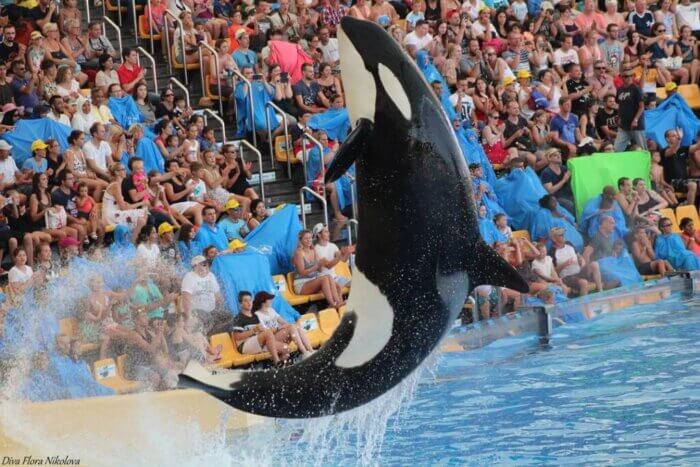This week, on September 14th, Loro Parque Zoo announced the death of the orca Kohana at the young age of 20. We should be shocked. Sadly, we are not. It is all too miserably routine.
Last year, it was Skyla at age 17. Five months later, it was Ula at age 2. Today it is Kohana, at age 20.
The press statement from this Spanish zoo reads in a way that’s altogether familiar when whales die at entertainment parks: a “sudden passing” … “deep sadness” … “did everything in our power” … “part of the Loro Parque family” … “love and respect”, and so on.
This time, Loro Parque adds: “The memory of Kohana … will make our mission even stronger: to provide the best care and welfare to the different species of our animal embassy.” We’re left wondering to whom these whales are ambassadors, and what is the message about care and welfare that they’re conveying.

Photos of Kohana above and in title are by Diva Flora Nikolova, used with permission.
Kohana was born at SeaWorld San Diego in 2002. As with the whales at all these facilities, her family tree and her travels tell us a lot about her welfare and wellbeing. Her father was Tilikum and, living across the country at SeaWorld Orlando in Florida, he fathered her by artificial insemination.
In the ocean, orcas live in close family groups their whole life. But at age two, Kohana was transferred to SeaWorld Orlando, and two years after that to Loro Parque across the Atlantic.
In 2010, she gave birth to Adán, a male, and in 2012 to Victoria, a female. Their father was Kohana’s half-uncle Keto, who had been shipped to Loro Parque with her. Adan is still alive, but Victoria died after less than a year.
Very simply, whales can never thrive in concrete tanks. In the ocean, an orca learns from her elders how to be a successful, thriving member of her family: what to eat, how to communicate with family members, when and how to give birth, how to care for her young. Just as we humans do. Born into a concrete tank, however, and then shuttled around the world, Kohana learned none of this. Treated more like a breeding machine than a mother, she was unable to bond with and care for either of her calves, and she rejected both of them.
Loro Parque has announced that a full necropsy will be conducted. But what will we learn from it? In Skyla’s case, we learned about an intestinal torsion and acute septicemia. In Ula’s, we heard of a deformation of the skull and photo-toxic lesions.
But medical reports of this kind have a way of masking the underlying basic truth: Very simply, whales can never thrive in concrete tanks.